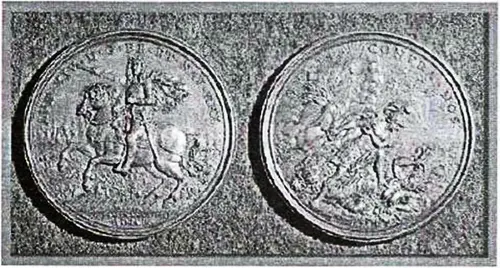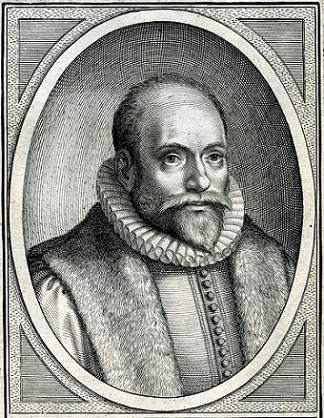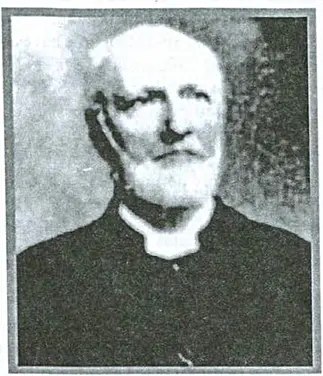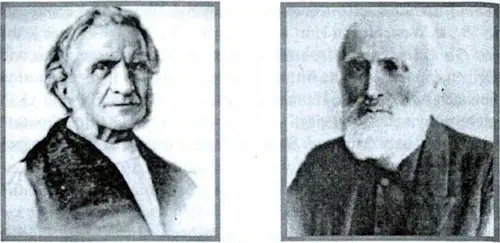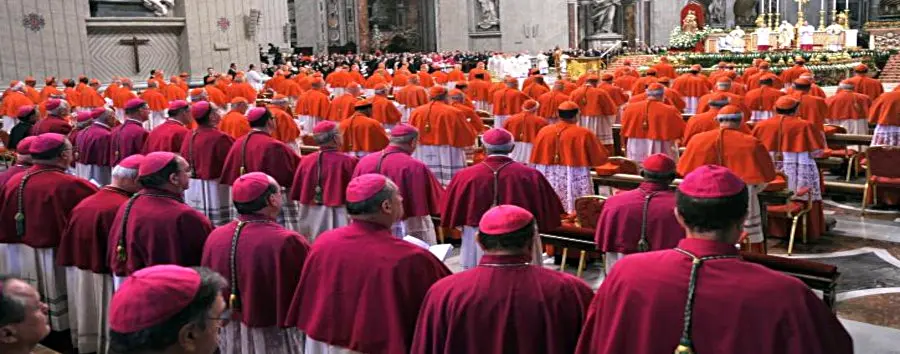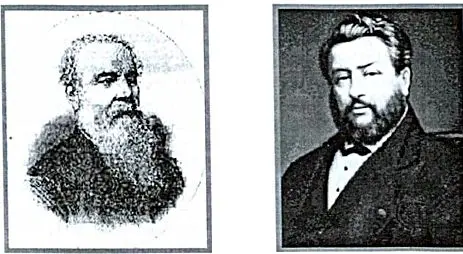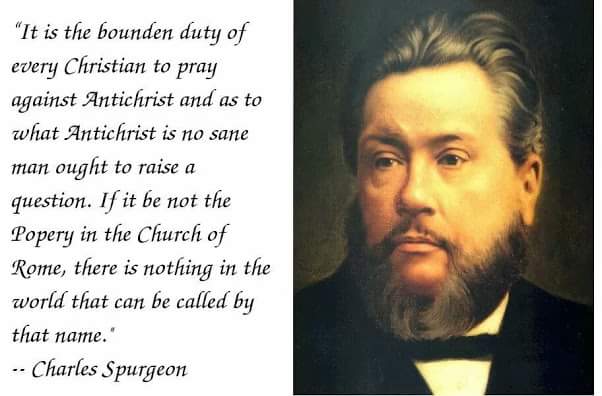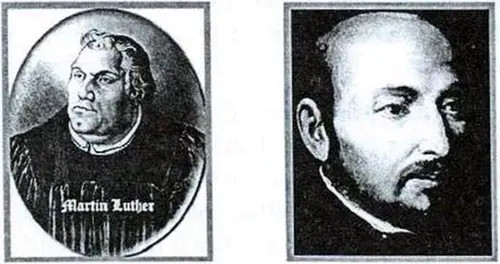This is from a PDF file on Berean Beacon Loving Catholics and Exposing Catholicism
The Vatican has been the most powerful institution in Europe, and although its influence declined at the time of the Reformation it has made a significant recovery in the past two centuries. The Protestant nations of Europe that were religiously, politically and economically freed from a totalitarian Roman Church seem now to be blindly returning to her yoke.
The Vatican Bank’s tax exempt status in Italy has made it possible for her to manipulate many of the largest multi-national corporations This influence is however as nothing when compared with her power in Europe and in the world of politics and religion. A Jesuit priest writing in ‘Inside the Vatican’ stated, “Despite the importance of the papacy for the Catholic church and its prominent role in international affairs, its internal workings are little known to Catholics, to world leaders, or to the world at large.”*
This lack of knowledge is particularly evident when it comes to the role the Vatican is playing in the making of the EU. If the Protestant nations of Europe are to remain free, true believers on both sides of the Atlantic must address the issue of Rome and the EU and take it to our God in prayer. The alternative may well prove to be the return of the Inquisition.
It is the authors’ desire that this study of one of the most powerful institutions in the world today be carefully examined. Our purpose is to sound the alarm and to stimulate others to do so too.
* Inside the Vatican: The Politics and Organization of the Catholic Church, by Thomas J. Reese, Harvard University Press, 1996, 4
Papal Rome is widely respected and admired by the world. She is seen as well organised, successful and influential, as well as dignified and authoritative. The aura of uncritical acclaim around the person of successive popes is unique to the Church of Rome. No other global institution has it. Her pronouncements on moral issues carry great weight. So well regarded is the Papacy today that the acceptance of her extends even to Evangelicals, most of whom have ceased to question her doctrine.
Why then should we take a position contrary to this avalanche of present-day approval? We do so because we are commanded by the Lord God to proclaim His truth and His warnings. For all is not at all as it seems. We believe that the late great British preacher Dr. Martyn Lloyd-Jones was correct when he proclaimed that “the Roman Catholic Church is a counterfeit and a sham; it represents prostitution of the worst and most diabolical kind . . . It binds the souls of its people absolutely, just as Communism and Nazism did, and it is itself a totalitarian system.”1
Papal Pronouncements on Europe
On August 31st 2003, Pope John Paul II entrusted the future of the new Europe to the Virgin Mary. In the words of the Catholic news agency Zenit,
“He placed Europe in Mary’s hands, so that it would ‘become a symphony of nations committed to building together the civilization of love and peace.’ Last Sunday, the Holy Father urged that the final draft of the European Constitution should recognize explicitly the Christian roots of the continent, as they constitute a ‘guarantee of a future.’”2
The official teaching of Rome makes clear that this statement concerning “the Christian roots of the continent” is a facade. When the Pope or his Church use the term “Christian” they mean “Roman Catholic”. A recent official decree of Rome condemns “the tendency to read and to interpret Sacred Scripture outside the Tradition and Magisterium of the Church.”3 Rome officially proclaims that the Christian Church of Christ is the Catholic Church. In her decree she states,
“Therefore, there exists a single Church of Christ, which subsists in the Catholic Church, governed by the Successor of Peter and by the Bishops in communion with him.”4
Just as the Nazis declared non-Aryans to be non-humans, so now the Church of Rome declares other churches to be non-churches. Her official words are,
“the ecclesial communities which have not preserved the valid Episcopate and the genuine and integral substance of the Eucharistic mystery, are not Churches in the proper sense. . . .”5
In the same document, Dominus Iesus (September 5th 2000), footnote 51 refers to a decree which states,
“We declare, say, define, and proclaim to every human creature that they by necessity for salvation are entirely subject to the Roman Pontiff.”6
The mind of Rome is thus expressed in her official decrees. Once the Protestant nations are committed to the emerging European superstate and its Constitution, the Vatican’s plan to once again “Christianize” the European Union will be implemented. As described by the London Sunday Telegraph, “The Pope is calmly preparing to assume the mantle which he solemnly believes to be his Divine Right – that of new Holy Roman Emperor, reigning from the Urals to the Atlantic.”7
The Vatican as a “Unique Contribution” to the EU
The EU already has most of the attributes needed for nationhood. It has a passport, a flag, a single currency and an anthem. It is also drawing up in its constitution the further characteristics of nationhood such as a president, international ambassadors and a foreign secretary. The Vatican carefully gives soul to all of this by claiming that this is “a unique contribution to the building up of a Europe open to the world”. The Pope in his Ecclesia in Europa states,
“One and universal, yet present in the multiplicity of the Particular Churches, the Catholic Church can offer a unique contribution to the building up of a Europe open to the world. The Catholic Church in fact provides a model of essential unity in a diversity of cultural expressions, a consciousness of membership in a universal community which is rooted in but not confined to local communities, and a sense of what unites beyond all that divides.”8
“The Particular Churches in Europe are not simple agencies or private organizations. Rather, they carry out their work with a specific institutional dimension that merits legal recognition, in full respect for just systems of civil legislation.”9
“Particular Churches in Europe” is simply a pretense. The Vatican views itself as the Particular Church, and officially states,
“The Catholic faithful are required to profess that there is an historical continuity — rooted in the apostolic succession — between the Church founded by Christ and the Catholic Church.”10
From the decrees published it is clear that, apart from the Church of Rome establishing herself as the “unique contribution to the building up of a Europe open to the world”, she claims for herself “legal recognition” in accord with her own “civil legislation”. This has been the basis of the Vatican’s political manipulation over the centuries. While Rome carefully prepares her own legal place, she will tolerate no rivals – “the ecclesial communities which have not preserved the valid Episcopate are not Churches in the proper sense.”11 Most certainly they are not to be included as part of the “unique contribution to the building up of a Europe open to the world”!
As author Adrian Hilton has warned in a recent article in The Spectator,
“the issue of European religious union is one that has been concealed even deeper than the plans for political union, but the ratchet towards a Catholic Europe is just as real. The Pope’s recent demand that ‘God’ be featured in the emerging European constitution has been echoed by many leading Catholic politicians and bishops. While on the surface such a reference may offend only Europe’s atheist and humanist contingent, it must be observed that when the Vatican refers to God, she sees herself as God’s infallible vice-regent upon earth, the leading organ of divine expression; indeed, according to its publication Dominus Iesus [5 September 2000], as the only mediator in the salvation of God’s elect, insisting that all other Churches, including the Church of England, ‘are not Churches in the proper sense’.”12
The Real Meaning of the Popes message to Europe
The Ecclesia in Europa pronouncement is one of the cleverest produced by Pope John Paul II. It is a masterpiece that purportedly proclaims the Christian message, while in fact it teaches the rites and rituals of the Papacy. For example the concept of the “Gospel of hope” is mentioned forty times in the dissertation. The message however is not one of hope; rather it is an adept counterfeit. For example Paragraph 74 begins by stating, “A prominent place needs to be given to the celebration of the sacraments, as actions of Christ and of the Church ordered to the worship of God, to the sanctification of people and to the building up of the ecclesial community.” The Pope thus presents his physical, symbolic sacraments as the efficacious cause of salvation. In place of the direct obedience to Christ Jesus demanded in the Gospel of faith, the sacraments are purported to be “actions of Christ”. This is where the Vatican’s pretense of “hope” lies. Such sacraments are declared necessary for salvation in the official teaching of Rome,
“The Church affirms that for believers the sacraments of the New Covenant are necessary for salvation. ‘Sacramental grace’ is the grace of the Holy Spirit, given by Christ and proper to each sacrament.”13
By setting aside the direct work of God in Christ Jesus, the sacraments of Rome are an attempt to steal from Christ His Priesthood and an attempt to rob Him of His power as Mediator. The Roman Church attempts to rob God the Holy Spirit of His peculiar work as the Sanctifier, by attributing His power of giving grace to its own rituals. Thus it attempts to rob God the Father of His prerogatives of justifying and forgiving sinners. This is the reality behind the concept of the “Gospel of hope” that permeates the Pope’s message to Europe.
Throughout the centuries, Rome has substituted her sacraments for the Gospel in a consistently degrading insult to the grace of God. Shameful to God and damning to men is the Pope’s memorandum to Europe. We are at a seminal moment in history, as the Holy Roman Empire re-emerges as a European Superstate. Throughout her history the Papacy has remained self-governing and invincible to every restraining force other than that of the power of God in the Gospel. Bible believers need to be aware of the times in which we live, we need to study the history of the EU in order to see the outworking of the guile of Rome.
A Short History of the EU
After the destruction, ruin and enormous human cost of the Second World War, statesmen and politicians resolved to ensure that it would never happen again. In 1946 Sir Winston Churchill suggested in a famous speech at Zurich in Switzerland that, “we must build a kind of United States of Europe”. This was not, as Euro-enthusiasts have often insisted, a commitment for Britain to participate in the European project. Churchill envisaged a Western Europe of free independent sovereign nations, not an undemocratic federal Superstate. Together the nations would reach for a destiny of unprecedented co-operation and harmony.
In 1950 the Schuman Plan proposed the supra-national pooling of the German and French coal and steel industries in order to lay the basis of European economic unity. The partial merger of the economies of the two traditional enemies would ensure continuing peace between them. French Foreign Minister Robert Schuman and German Chancellor Konrad Adenauer signed the agreement, The Treaty of Paris, as co- founders of the Franco-German Coal and Steel Confederation. Like their colleagues Jean Monnet and Paul Henri Spaak, they were both devout Roman Catholics who shared the vision of successive post-war Popes for a re-Catholicized and united Europe. Adenauer and Schuman, along with Alcide de Gasperi, all three “founding fathers”, are in the process of being made into “Saints” by the Vatican as a reward for founding the new Europe “on Roman Catholic principles”.
The European Economic Community (The EEC), established in 1957 by The Treaty of Rome brought in Italy, Holland, Belgium and Luxemburg to join France and Germany, removing trade barriers between member states and unifying their economic policies. It made clear to those with sufficient stamina to read the Treaty’s lengthy and turgid document that the aim of the project was always to achieve political unity in economic disguise, “an ever closer union”.14
In 1962 the Common Agricultural policy was introduced with a single European market and price fixing, which has consistently favored French farmers. The Northwest Technocrat commented on the developing design of the European project at that time, “Fascism in Europe is about to be reborn in respectable business attire, and the Treaty of Rome will be finally implemented to its fullest extent. The dream of a Holy Roman Empire returning to power to dominate and direct the so-called forces of Christian mankind of the Western world is not dead, but still stalks through the antechambers of every national capital of continental Western Europe, in the determination of the leaders in the Common Market to restore the Holy Roman Empire with all that that means!”15
Nearly thirty years later, the London-based Sunday Telegraph was to express the same concern in a major article headed “Now, a Holy European Empire?” It stated,
“The Vatican notoriously thinks in centuries. In Pope John Paul II we have the most political pope of modern times. It is in the movement towards federalism of the Common Market, with the coming membership of Eastern European countries, as well as in the turmoil of the Soviet Union, that the Pope may see the greatest possibility for an increase in Catholic political power since the fall of Napoleon or since the Counter-Reformation. The Common Market itself started under the inspiration of Catholic politicians – such as Adenauer of Germany, Paul Henri Spaak, Jean Monnet and Robert Schuman. . . . The EC Social Charter and the socialism of Jacques Delors (President of the European Commission) are imbued with Catholic social doctrine. If European federalism triumphs, the EC will indeed be an empire. It will lack an emperor: but it will have the Pope. It is difficult not to think that Wojtyla realises this.”16
In 1967 Prime Minister Harold Wilson announced that Britain would apply to join the European Community (the Common Market). The British people voted to do so in a referendum in the belief that they were joining a closer trading relationship, a kind of club, rather than being bound into an evolving Superstate. Unfortunately no more people had read The Treaty of Rome in the 1960s than had read Mein Kampf in the 1930s. Politicians and opinion formers, who should have known better, accepted assurances that no loss of sovereignty was involved in acceding to the EEC.
In 1973, Prime Minister Edward Heath, who definitely did know better, committed Britain into membership of the EEC. Ireland and Denmark joined the same year. In 1979, the European Parliament was established in Strasbourg with its first direct elections. The word “economic” was carefully dropped from the name of the project that was now to be described as the European Community (EC). Greece joined the EC in 1981, which was the year of the Single European Act – enacting the gradual transfer of executive, legislative and judicial powers from member States to EC “instrumentalities”. Spain and Portugal signed up to the EC in 1986, making a total of twelve member states. In 1990, East Germany joined as part of a united Germany.
In February 1992, The Maastricht Treaty, or Treaty of European Union, was signed at Maastricht in Holland by the foreign and finance ministers of the member states. Its objective was to bind the twelve nations into cooperation or “ever closer union” on a range of issues other than economic and trading. To this end the EC was renamed The European Union. The Maastricht Treaty established economic and monetary union, which would lead ultimately to all member states sharing a single currency. The religious dimension, although not apparent, was the key to what was being formed. Among European leaders who were most influential in furthering the Maastricht agenda were Jacques Delors and Dutch Prime Minister Ruud Lubbers (both Jesuit educated) as well as devout Catholics German Chancellor Kohl and Prime Minister Felipe Gonzales of Spain. These four leaders were all products of the Roman Catholic Social Movement, which believes that “there is no nobler task than the unifying of our continent” and views the idea of a united Europe as essentially a Catholic concept.
The Amsterdam Treaty followed and was signed in 1997 as a further notch of the ratchet of “ever-closer union”, meaning in fact, ever diminishing sovereignty, following the principle of acquis communautaire (which asserts “that what has been acquired cannot be taken away”). The Amsterdam Treaty gave more powers to the unelected Commission and particularly to its unelected President as the initiator, administrator, mediator, negotiator and guardian of the Treaties. The Treaty of Nice, signed by Prime Minister Tony Blair in December 2000, was the last in the series of treaties, which have progressively drained the UK of its sovereignty. At Nice there was finally and irrevocably established the EU as a sovereign federal state. A new European criminal code, Corpus Juris, will replace the classic, longstanding British criminal code. Vital elements such as Trial by Jury and Habeas Corpus are missing from this new code.17
EU Supreme Power
Even before the Treaty of Nice came into force, the EU Constitutional Convention, presided over by former French President Valery Giscard d’Estaing, produced its first draft of a constitution for Europe in October 2002. On 13 June 2003 a final version of the draft Treaty Establishing a Constitution for Europe, was produced. Quoting from the London Daily Telegraph,
“To the strains of Beethoven’s Ode to Joy, the Convention on the Future of Europe proclaimed agreement yesterday on a written constitution for a vast European Union of 450 million citizens bringing together East and West. Valery Giscard d’Estaing, the chair of the 105-strong body, held up a text . . .‘We have sown a seed and I am sure that seed will grow and bring fruit. Europe’s voice will be heard and respected on the international stage. Instead of a half-formed Europe, we have a Europe with a legal identity, with a single currency, common justice, a Europe which is about to have its own defence.’ There was no vote. M Giscard, famed for his autocratic style during 16 months of stormy debates, simply discerned consensus among the MPs, MEPs, and national envoys. Few were willing to spoil the party by crying foul. . . . The Constitution gives the EU full ‘legal personality’ and determines that EU law will have primacy over the law of member states. It prohibits Westminster from legislating in most areas of national life – agriculture, justice, energy, social policy, economic cohesion, transport, the environment, and aspects of public health – unless Brussels chooses to waive its power.”18
“If the new constitution is accepted, the EU will no longer be a treaty organization in which member states agree to lend power to Brussels, for certain purposes, on the understanding that they can take it back again. Rather, the EU will itself have become the fount of power, with the ability to sign international treaties in its own right. It will have its own President, foreign minister and foreign policy; its own parliament, supreme court, flag, anthem and currency. It will have become a sovereign state, in fact a federal superstate. The member states whose constitutions will be subject to this higher constitution, will cease to be sovereign. The new order will be irreversible. M Giscard made clear that the national veto is to be abolished in 50 new areas, including immigration and asylum.”19
Under the new Constitution’s rules, no nation is to be allowed to secede from the EU except by a two-thirds majority vote of member states in agreement with the secession.
The Same Spirit – of Domination
The EU will acquire competence in “all areas of foreign policy, including the progressive framing of a common defence policy”; though major decisions must be unanimous. The European Court, which acquires vast powers, will ensure that member states “actively and unreservedly support the EU’s common foreign and security policy”. Article 8 of the draft Constitution, which also imposes “an obligation of loyal cooperation vis-à-vis the Union” of member states, reinforces the supremacy of EU law over the laws of member states.20 An EU attorney-general will be able to prosecute “cross-border crime”, a catch-all term that will allow Brussels the supreme jurisdiction throughout the EU. The Constitution lacks any serious democratic dimension and is clearly designed to strengthen the EU power structure for the benefit of the European elite. Doubtless the intention is to force it through with the minimum of real democratic scrutiny.
This spirit of absolute autocracy that is to govern the EU is frighteningly akin to the spirit that rules in the Vatican, “The First See is judged by no one.”21 Rome’s stamp upon the pages of history has ever been “no accountability”. Its laws also state, “It is solely the right of the Roman Pontiff himself to judge, in cases mentioned in can. 1401: 1. those who hold the highest civil office in a state.”22 The same spirit of despotism in both systems loudly proclaims supreme caution.
“The Abandoning of a Thousand years of History”
The Treaty that establishes the new Constitution, due to be agreed by the Intergovernmental conference in 2004 is far more extensive than any previous treaty. Derek Heathcote-Amory, the Conservative Party representative at the Constitutional Convention, rightly described it as “bigger than the treaties of Maastricht, Amsterdam and Nice rolled together.” The implications of such huge changes, “the abandoning of a thousand years of history”, have not been really understood by the majority of the British people. Little by little, treaty by treaty, first the EEC, then the EC, then the EU; people have become used to Europe and bored with it; and with so many scare stories about Brussels, so-called dangers threatening their independence and sovereignty, so many eurosceptics “crying wolf”. It has all being going on as long as they can remember – and, after all, Britain does have the fourth largest economy in the world, and in the main they have prospered. The problem is that the wolf is now at the door!
Many of those who cherish Britain’s independence and who do not want to give away that for which two world wars were fought to retain, realize this. If the move to establish the Constitution for Europe is ratified by the UK parliament, it would be the first time that the United Kingdom has adopted or acceded to a wholly written constitution. How can the UK adopt such a constitution, having never had one before? The answer would seem to be straightforward. The people must give their consent. However if the Labour government has its way there will be no referendum. Tony Blair, who is said to have set his sights on the top job as President of the “United States of Europe”, has made clear that there will be no referendum. He does not want it because he knows he cannot win it. Also a referendum campaign would educate the people in both what is proposed and what has already happened. The Prime Minister agreed to hold a referendum on the Single Currency before he came into office in 1997, but to date he has hesitated to do so, as “the conditions have not been right” – again, meaning that he would have lost it.
The EU’s Power Symbols
The EU Parliament’s main base is Strasbourg in France. The city symbolizes the dream of Franco-German integration that was at the heart of the Holy Roman Empire of Charlemagne. In December 2000, the European Union opened its new Parliament building there. It is patterned after Dutch artist Pieter Breugel’s famous painting of the Tower of Babel. Breugel’s painting portrays the Tower unfinished, as does the new EU building, which is built to appear unfinished in close resemblance to the painting. Outside the Parliament building is a statue of the goddess, Europa, riding a Bull. Inside, the dome displays a colossal painting of the Woman riding the Beast. The woman riding the beast symbol also appears on some of the “two euro” coins that have been minted.23
The same imagery has appeared on EU postage stamps, including the British one issued in 1984 to commemorate the second elections for the European Parliament. The EU’s conscious use of such symbolism creates the impression that it wishes to bring to mind Europe’s desire to rule using all the power it has at its disposal. In Scripture, the Woman riding the Beast is revealed in Revelation 17. The identification with the Church of Rome has long been apparent to Bible believers. This interpretation of Bible prophecy did much to empower the Reformation. Only Papal Rome is a city which is sited on seven hills, a religious system, whose Prelates “are arrayed in purple and scarlet color”, a civil state “with whom the kings of the earth have committed fornication”, historically, with hands that are crimson with the blood of Bible believers, “that has been drunken with the blood of the saints and with the martyrs of Jesus.” Papal Rome is the only worldwide religious system that calls itself and its virgin goddess “Mother”.
History also Unveils what is Now Happening
A brief review of European history helps with this identification of the Papacy with Scripture. After the collapse of the Roman Empire in the fifth century, the Papacy continually sought to establish the same dominance as had the Caesars (in fact successive Popes used the same name – Pontifex Maximus). They did so by weaving together both temporal and spiritual jurisdictions and blasphemously assumed to themselves the office of “the Vicar of Christ”. In that spurious role, in the course of a few centuries, they were able to subjugate the kings of Europe who became their vice regents.24 Thus century-by-century the “Mother Church” succeeded in extending her power, usurping that of civil governments. Under the guise of religion she planted her own hierarchical system of government, with its exhaustive financial requirements, in each of Europe’s kingdoms. The blending of things civil and sacred was the Vatican’s hard to resist method of operation in those dark ages. Unhappily this is still so today, and will be so again, once power and control have been consolidated in the new “United States of Europe”. “Semper eadem”, Rome never changes.
The duplicity of the Papacy’s perpetual mixing of political and spiritual powers could surely not be better portrayed than in God’s Word in Revelation 17. The Apostle John beheld the ten-horned beast, representing the Roman Empire, carrying a woman dressed in purple and scarlet, decked with gold, precious stones and pearls. She is a harlot, and the mother of harlots and abominations, the paramour of kings, the pitiless persecutor intoxicated with the blood of the saints and of the martyrs of Christ Jesus. The angel told John, “The seven heads are seven mountains on which the woman sitteth.” To explain this singular fact and to avoid guesswork, he adds, “the woman which thou sawest is that great city which reigneth over the kings of the earth.” (v 7) The city is indisputably Rome. The name upon the harlot’s brow is “mystery”. The city cannot be pagan Rome, about which there was no mystery. In contrast, Papal Rome was mysterious and continues to be elusive. Babylon, in the book of Revelation, is a city and an harlot. Jerusalem, in the same book, is a city and a bride. Babylon is the deceptive lover of earthly kings; Jerusalem the chaste bride of the King of Kings. The contrast is between Church and Church, the faithful Church and the Apostate Church.
The Flag – Another EU Spiritual Symbol
The flag of the European Union, blue with a design of twelve stars in a circle derives from the twelve stars that in Catholic tradition are the halo around the head of the Virgin Mary.[25] The stars stem from the belief that twelve is the symbol of perfection and of what is unchangeable. The political purposes behind all of these symbols are much debated; the Biblical significance, however, is revealing.26 According to the European Union publication Europe’s Star Choice: “The flag has its roots in Romanism, takes its symbolism from Romanism, and represents the Roman Catholic ideal.” The design with its halo of stars was inspired by many pictures of the Virgin Mary, the most prominent of which is on the Council of Europe stained glass window in Strasbourg Cathedral.
The EU’s “single market”, “social chapter” and “subsidiarity” are concepts of Roman Catholic social teaching, originating with Pope Pius XI in the 1930s, and adopted by Hitler’s Vatican-backed Third Reich. Nazi Finance Minister Walther Funk, styled as the architect of Hitler’s “New Europe”, issued a compendium of papers in 1942 which contained detailed plans for a Europe bearing close resemblance to the Europe now emerging. Funk’s papers described:-“The European Economic Community”, “The Common European Currency”, “Harmonisation of European Rates of Exchange”, A Common Labour Policy and a European Regional Principle. The last has now become known as the Europe of Regions Policy – England is to be replaced by seven regions, which with Scotland, Wales and Northern Ireland will total ten regions in all. Together they are to replace the United Kingdom!
The Third Reich to be followed by the Fourth
The Third Reich, like the EU, was an attempt to revive the Roman Empire. The higher strategy of the Vatican and the acquiescence of the Catholic Central Party had brought Hitler to power. Instrumental in this strategy were Reich Chancellor Franz von Papen and Papal Nuncio, Monsignor Pacelli, the future Pope Pius XII. Von Papen goes down in history as the man who obtained Hitler his two-thirds majority, signed the law which made him Head of State and was also responsible for the enormously important Concordat with the Church of Rome in 1933. He declared, “the Third Reich is the first power in the world to put into practice the lofty principles of the Papacy.”27 Incredibly, given his responsibility for Nazi atrocities, he was acquitted at Nuremberg and later became Papal Chamberlain to Pope John XXIII. Pacelli, as Pope Pius XII, became notorious for his silence with regard to the Holocaust and the other appalling crimes committed by the Fascists in Europe. The Vatican’s attempts to canonise him have proved highly controversial.
The Nazi leadership was mainly Roman Catholic. Hitler and Himmler were greatly influenced by the Jesuits, as was Mussolini whose Father Confessor was a Jesuit. Hitler said of Himmler, “in Himmler I see our Ignatius de Loyola.”28 Joseph Goebbels was also Jesuit-educated, as was Walter Schellenberg who led the SD or Sicherheitsdienst, the Security Service of the SS, and before being sentenced to death at Nuremberg for crimes against humanity, stated that, “the SS organisation has been constituted by Himmler according to the principles of the Jesuit Order. Their regulations and the spiritual exercises prescribed by Ignatius of Loyola were the model Himmler tried to copy exactly”.29
The lesson and warning of history is that undemocratic regimes whose leaders owe allegiance to the Pope or practise “the lofty principles of the Papacy” pose a threat to individual liberty, and carry out religious persecution. For example, the inquisition was alive and well in the Balkans in the 1940s. “Convert or die” was the choice on offer to 900,000 Orthodox Serbs in the new state of Croatia, run by Nazi puppet Anton Pavelich and Roman Catholic Primate, Archbishop Alois Stepinac. 200,000 were “converted”; 700,000 who preferred to die, were tortured, shot, burned or buried alive. This appalling persecution, carried out mainly by Ustashi priests and friars “for the triumph of Christ and Croatia”, included many of the worst atrocities of the War; certainly the mutilations were horrific, the savagery terrible. 30
Few people know what took place in Croatia during the Second World War: news of it has been simply suppressed. Nor do they understand what happened in the Balkans in the 1990s. The re-establishing of Croatia as an independent state, during the disintegration of Yugoslavia in the 1990s, is instructive. The European Union, led by Germany ignored the protest of Britain and many other nations in pressing for this to happen. The Vatican was the first to recognise the reborn Croatia. Writing in September 1991 in the Sunday Telegraph historian Andrew Roberts expressed surprise that,
“almost the entire Western media have chosen to champion the Croats. . . . how are the Serbs expected to react to the decision to adopt the Ustashi’s chequered symbol as the Croatian national flag? In Krajina it takes longer than the attention span of today’s CNN broadcaster to forget the way Franciscan friars participated in the slaughter of Serbs in Croatian Bosnia. Orthodox Serbs were promised protection if they converted to Catholicism and were then killed, after they entered the churches, as the priests looked on.”31
None of this is surprising if we know the history of Roman Catholicism. “From the birth of Popery in 600, to the present time, it has been estimated by careful and credible historians, that more than FIFTY MILLIONS of the human family have been slaughtered for ‘the crime’ of heresy by popish persecutors, an average of more than forty thousand religious murders for every year of the existence of Popery.”32 The Scripture speaks propetically of her lust for power and blood; history has recorded many of the gruesome details.
The Papacy has been predominant throughout the whole history of Europe. It has left its mark and record on most of the major nations. In times past it has proven itself to be totally dominant in its control of Kings and Princes. The whole history of the Western world over fourteen centuries has been plagued by the intrigues and machinations of the Church of Rome in unceasing pursuit of her global designs. In the words of the historian J.A. Wiley,
“. . . as regards the influence of Popery on government, it were easy to demonstrate, that the Papacy delayed the advent of representative and constitutional government for thirteen centuries. Superstition is the mother of despotism; Christianity is the parent of liberty. There is no truth which the past history of the world more abundantly establishes than this. It was through Christianity that the democratic element first came into the world. The papal government is the very antipodes of constitutional government: it centres all power in one man: it does so on the ground of divine right; and is therefore essentially and eternally antagonistic to the constitutional element. Its long dominancy in Europe formed the grand barrier to the progress of the popular element in society, and to the erection of constitutional government in the world.”33
Our Hope and Prayer for Europe
Once again we have come to a defining moment in history. Once more the Vatican is engaged in placing its hallmark and its rituals on the face of Europe to further its familiar agenda. It does so in a number of different ways directed from the highest levels of command in the Vatican. Firstly, it operates directly through its civil ambassadors in each European nation. According to the Catholic Almanac “Papal representatives ‘receive from the Roman Pontiff the charge of representing him in a fixed way in the various nations or regions of the world.’”34 Secondly, the Roman Church also deals directly and legally with individual nations through its many legal concordats. Less directly it operates through its representation and influence in most of the governmental agencies of Europe. This involvement, especially in the area of finance and business, is documented in her Almanac under the heading of “Governmental Organisations”. These include the United Nations, the Council of Europe, the Organisation of American States, the International Organisation for the Unification of Private Law and the International Council on Grain, among others. Rome has her observers and delegates in all of these many listed organisations.35 Finally, she operates through her own people in Europe whose allegiance is first and foremost to the Roman Catholic Church. Many of her people have access to positions in the ruling structure of their nation. As Roman Catholics, they are enjoined by the Vatican to use both influence and position to bring that nation into line with papal policy on any particular issue.
We need to pray that Europe will not be taken back to the state that it was in, spiritually and politically, during the Middle Ages. Roman Catholicism though outwardly and politically strong is inwardly and spiritually feeble. By her laws and ceremonies, her Bishops, Priests and laity are obliged to accept the system that recognizes the Pope as the universal “Sovereign Father” while denying the true Father and the Son. From its traditions, history, and crises, it is evident that it is an institution lacking the Gospel of grace in Christ, one that walks in darkness and in the shadow of death.
In contrast, the true Christian faith may outwardly look small and weak; but inwardly, and in essence, it is the strongest power on earth. That same power liberated most of Europe at the time of the Reformation. It is the power that is in Christ Jesus the Lord, and inseparable from Him. In the words of the Apostle Peter, “blessed be the God and Father of our Lord Jesus Christ, which according to his abundant mercy hath begotten us again unto a lively hope by the resurrection of Jesus Christ from the dead.”36 The reason for our confidence is our relationship to the risen Saviour the Lord Jesus Christ. He is Lord, the universal King and Sovereign, the Priest and Saviour. Christ Jesus our Lord is a Prophet, anointed with the Spirit and furnished with all gifts necessary for the instruction, guidance, and salvation of His people through His written Word, the Holy Scriptures. He and His Gospel of grace are our hope for the future of Europe. Our inheritance is reserved in heaven, on earth however we “are kept by the power of God through faith . . .”37
We remember that the greatest power of God has often been experienced in times of the greatest declension, such as the time of the 18th century Revival and that of the Reformation itself. “The people that walked in darkness have seen a great light: they that dwell in the land of the shadow of death, upon them hath the light shined.”38 God in His sovereignty and in His divine timing can bring a people to the Bible, to His truth of salvation by grace alone, through faith alone, in Christ alone. When He pleases He is able with one word of His grace, to renew Europe by an act of His power, and make His enemies the footstool of Christ. We pray that He will give us the faith of the Reformers and of all those in the history of Europe who have given their lives for Biblical Truth. For the European Union we pray the words of the prophet of the Lord, “Turn thou us unto thee, O LORD, and we shall be turned; renew our days as of old.”39 God can send forth His Spirit when He pleases. He did so at the time of the Reformation; we pray that He will do so again now! We remember the words of John Owen at another tuning point of history. He spoke of his own nation, England, at a time of social disintegration yet looking for revival. We now need that same faith and confidence for Britain and for the future of all the EU,
“When God will do this I know not: but I believe God can do this: He is able to do it – able to renew all his churches, by sending out supplies of the Spirit, whose fullness is with Him, to recover them in the due and appointed time. And more; I believe truly, that when God hath accomplished some ends upon us, and hath stained the glory of all flesh, He will renew the power and glory of religion among us again, even in this nation.”40
Watch and Pray; Sound an Alarm in Zion
The Church of Rome is one of the major players in the “creeping totalitarianism” of the New World Order. Her designs on the EU are a major part of the unfolding global strategy. We need to watch and pray as the “Fourth Reich” emerges out of its embryo. A watchman of old was expected to guard against robbers and disturbers of the peace. We are all commanded to be watchmen, “to watch and pray”. There has been a dreadful apathy that has afflicted the household of God, an indifference to the clear threat to our ancient liberties and Protestant identity from both the EU and the Church of Rome. As watchmen of the Lord today we are to guard against false teachers and false religion. We are to watch and discern the actions and words of the one who would seek to supplant the Gospel with apostasy and tyranny. Our task under God is to sound an alarm, “blow ye the trumpet in Zion . . .let all the inhabitants of the land tremble: for the day of the Lord cometh, for it is nigh at hand.”41 Now even more than in the days of old the commands of the Lord are to be obeyed, “son of man, I have made thee a watchman unto the house of Israel: therefore hear the word at my mouth, and give them warning from me.”42 As we make our stand, so also we pray expecting to see the power of God at work in Europe, “they that wait upon the LORD shall renew their strength; they shall mount up with wings as eagles; they shall run, and not be weary; and they shall walk, and not faint.”43 We owe the liberty that we yet enjoy to Jesus Christ the Lord. By His faithfulness and perfect sacrifice He has satisfied the demands of the broken law of the All Holy God. It is He, the Son of God, who has made us free. “If the Son of God shall set you free you will be free indeed.”
There is genuine unity of all true believers throughout the world. There is but one faith. All true believers are converted by the same Holy Spirit, and receive the same work of grace, which places them in the Beloved. In Christ Jesus we are spiritually one and called to stand fast in this liberty, and stand firm in His truth. “Stand fast therefore in the liberty wherewith Christ hath made us free, and be ye not entangled again with the yoke of bondage.”44
Notes
(I didn’t hyperlink the URLs because many of them are broken. No sense to click on a hyperlink and get page not found.)
1. Bible League Quarterly (20 Thistlebarrow Road, Salisbury SP1 3RT, England) Oct-Dec 1981
2. Date: 2003-08-31 Code: ZE03083104 http://www.zenit.org/english/ 9/3/03
3. DOMINUS IESUS September 5th 2000 Para 4 http://www.vatican.va/roman_curia/congregations/cfaith/documents/rc_con_cfaith_doc_20000806_dominus- iesus_en.html”>www.vatican.va/roman_curia/congregations/cfaith/documents/rc_con_cfaith_doc_20000806_dominus- iesus_en.html
4. Ibid., Para. 17
5. Ibid., Para. 17
6. Henry Denzinger, The Sources of Catholic Dogma, Tr. by Roy J Deferrari from Enchiridion Symbolorum, 13th ed (B. Herder Book Co., 1957), #469.
7. Sunday Telegraph, July 21st
1991 8. Eccelsia in Europa, Para. 116 http://www.vatican.va/holy_father/john_paul_ii/apost_exhortations/documents/hf_jp- ii_exh_20030628_ecclesia-in-europa_en.html”>www.vatican.va/holy_father/john_paul_ii/apost_exhortations/documents/hf_jp- ii_exh_20030628_ecclesia-in-europa_en.html 9/23/03
9. Ibid., Para. 20, 7/15/03 Bolding in any quotation indicates emphasis added in this paper unless otherwise noted.
10. DOMINUS IESUS, Para. 16
11. Ibid., Para 17
12. Adrian Hilton, “Render unto the Pope”, The Spectator, 30 August, 2003, http://www.spectator.co.uk/article.php3?table=old§ion=current&issue=2003-11- 15&id=3450&searchText= 11/17/2003
13. Catechism of the Catholic Church (Liguori, MO: Liguori Publications, 1994) Para. 1129
14. Vid Treaty of Rome, Articles 164-188
15. The Northwest Technocrat, 1962
16. Sunday Telegraph, 25 August 1991
17. See Frederick Forsyth “The Abolition of Habeas Corpus” and Lord Stoddart on Corpus Juris, www.bullen.demon.co.uk 11/18/03
18. Ambrose Evans-Pritchard, “Few willing to spoil the party for Giscard” in www.telegraph.co.uk/news/main.jhtml?xml=/news/2003/06/14/weu14.xml 6/17/03
19. Ambrose Evans-Pritchard worldwatchdaily.org/index.cfm/ fuseaction/home.sa/a/9699 7/7/03 See also Noel Malcolm, Daily Telegraph 28/7/03 ‘A Federal Constitution with the Heart of a Manifesto’ http://www.telegraph.co.uk/opinion/main.jhtml? xml=%2Fopinion%2F2003%2F07%2F28%2Fdo2801.xml 11/17/
03 20. www.euroscep.dircon.co.uk/corpus4.htm 11/18/03
21. Code of Canon Law, Latin-English ed., New English Tr. (Wash. DC: Canon Law Society of America, 1983) Can. 1404 All canons are taken from this source unless otherwise stated.
22. Canon 1405, Sec.1 Can. 1401:1 states, “By proper and exclusive right the Church adjudicates: 1. cases which regard spiritual matters or those connected to spiritual matters.”
23. These EU figure-symbols can wee see on the Internet: www.pointsoftruth.com/beastarises.html 7/7/03; http://fp.thebeers.f9.co.uk/europe.htm 7/7/03; http://groups.yahoo.com/group/PatriotSaints/message/270 7/7/03; www.ianpaisley.org/article.asp?ArtKey=eu4 7/7/03
24. For fuller treatment, see J. A. Wylie, The History of Protestantism (Rapidan, VA 22733: Hartland Publications, 2002) Orig. publ. 1878. Four vols, particularly Vol. I, Ch. 3 “Development of the Papacy from the Time of Constantine to Hildebrand”.
25. For further detail, see Adrian Hilton, The Principality and Power of Europe: Britain and the emerging Holy European Empire (Box 67, Ricksmanworth, Herts WD3 5SJ, U.K.: Dorchester House, 2000) p. 55.
26. Documentation on these EU symbols are found on the following WebPages: www.pointsoftruth.com/beastarises.html 7/7/03; http://fp.thebeers.f9.co.uk/europe.htm 7/7/03; http://groups.yahoo.com/group/PatriotSaints/message/270 7/7/03; www.ianpaisley.org/article.asp?ArtKey=eu4 7/7/03
27. Robert d’Harcourt, “Franz von Papen l’homme a‘ tout faire . . .” (L’Aube, 3 Oct. 1946) in The Vatican Against Europe by Edmond Paris, Tr. from French by A. Robson, First English Ed 1961 (184 Fleet Street, London, EC4: The Wickliffe Press, 1961) p. 271.
28. Libres Propos, Flammarion, Paris 1952
29. Edmond Paris, The Vatican Against Europe (London: Wycliffe Press, 1961)
30. The Vatican’s Holocaust (Springfield, MO: Ozark Books, 1986)
31. Sunday Telegraph, 15 September 1991
32. “No computation can reach the numbers who have been put to death, in different ways, on account of their maintaining the profession of the Gospel, and opposing the corruptions of the Church of Rome. A MILLION poor Waldenses perished in France; NINE HUNDRED THOUSAND orthodox Christians were slain in less than thirty years after the institution of the order of the Jesuits. The Duke of Alva boasted of having put to death in the Netherlands, THIRTY-SIX THOUSAND by the hand of the common executioner during the space of a few years. The Inquisition destroyed, by various tortures, ONE HUNDRED AND FIFTY THOUSAND within thirty years. These are a few specimens, and but a few, of those which history has recorded; but the total amount will never be known till the earth shall disclose her blood, and no more cover her slain” John Dowling, History of Rome in Scott’s Church History, Book 8
33. J.A. Wylie, The Papacy, Book III. Chapter III, “Influence of Popery on Government”, www.wayoflife.org/papacy/03-03.htm 9/25/03
34. Our Sunday Visitor’s Catholic Almanac 1998 (Huntington, IN: Our Sunday Visitor, Inc., 1997) p.168
35. The Catholic Almanac 1998, p171 36. I Peter 1:3
37. I Peter 1:5
38. Isaiah 9:2
39. Lamentations 5:21
40. John Owen, The Works of John Owen (Johnstone & Hunter, 1850-53; Reprinted by The Banner of Truth Trust, Edinburgh EH12 6EL, 1976) Vol. 9, p 514
41. Joel 2:1
42. Ezekiel 3:17
43. Isaiah 40:31
44. Galatians 5:1
Permission is given by the authors to copy this article if it is done in its entirety without any changes. Permission is also given post this article in its entirety on Internet WebPages.
Our WebPage is: https://bereanbeacon.org/








